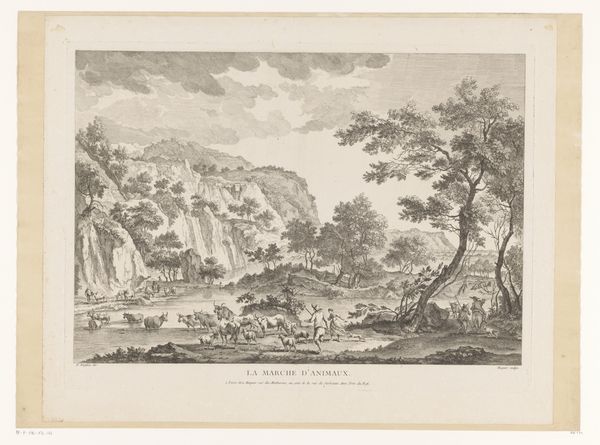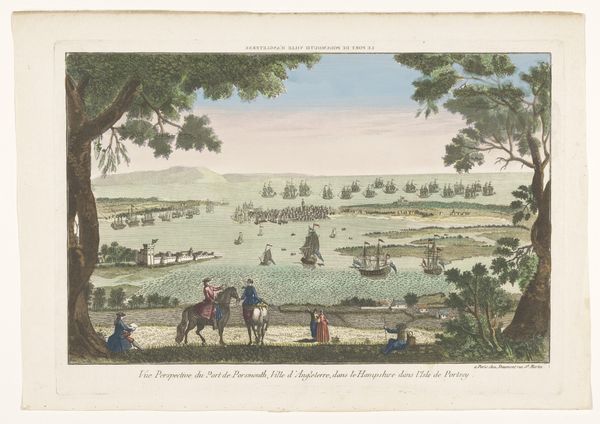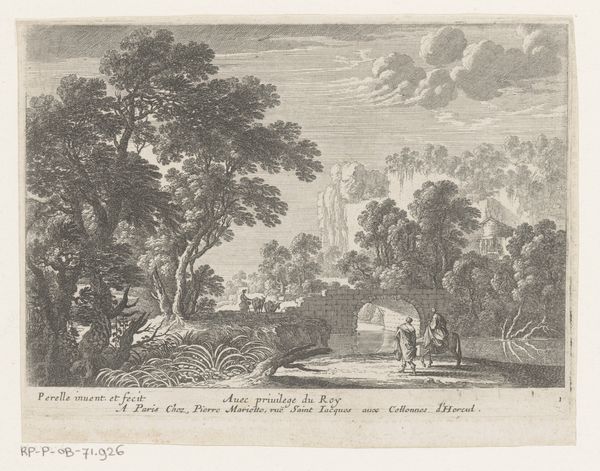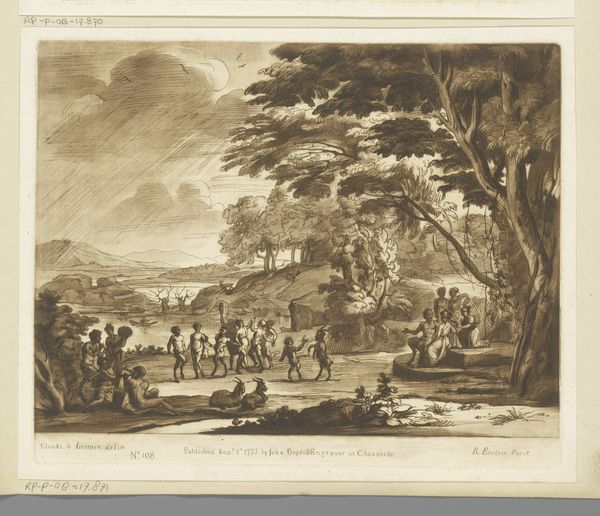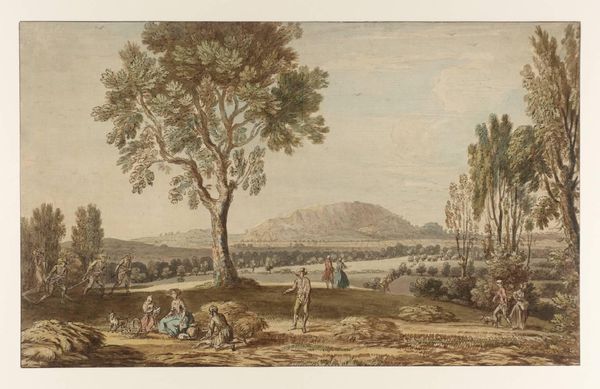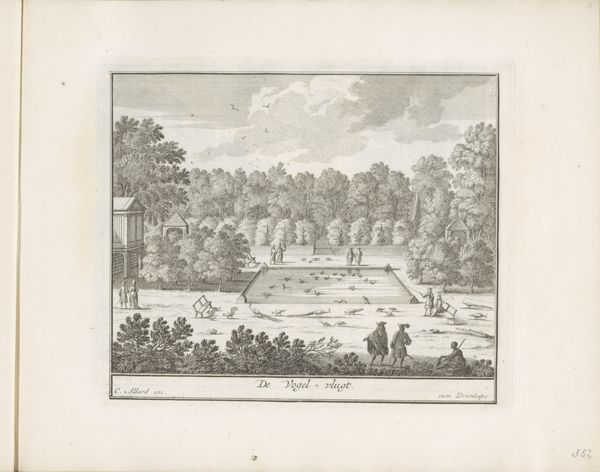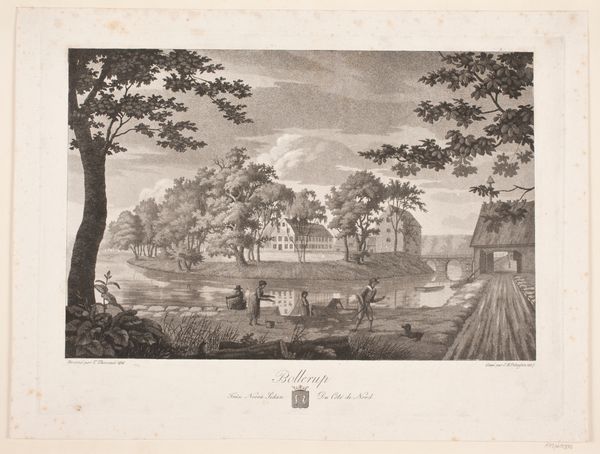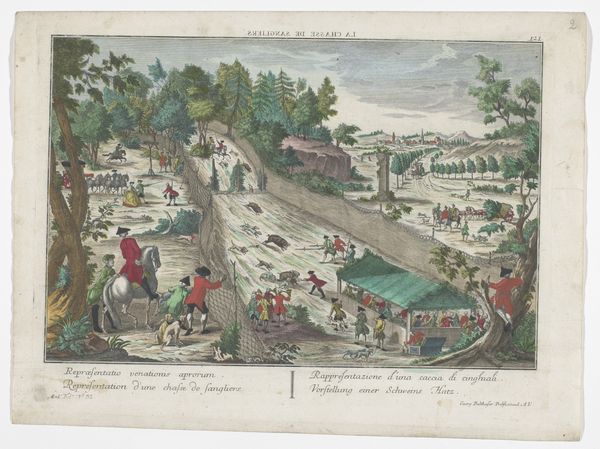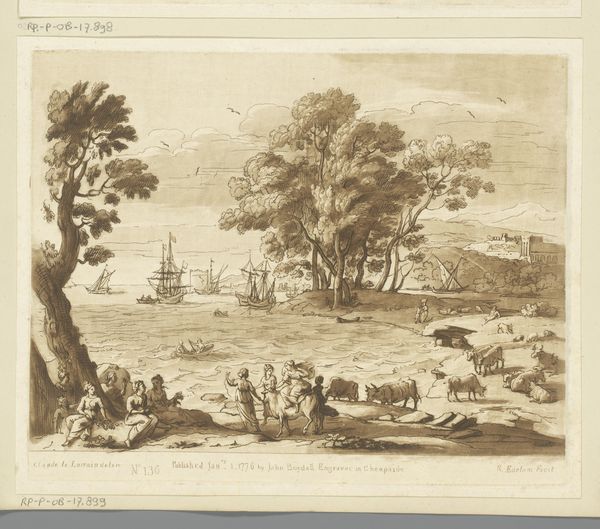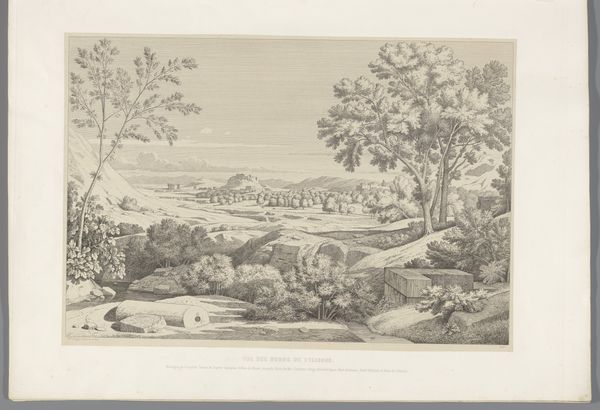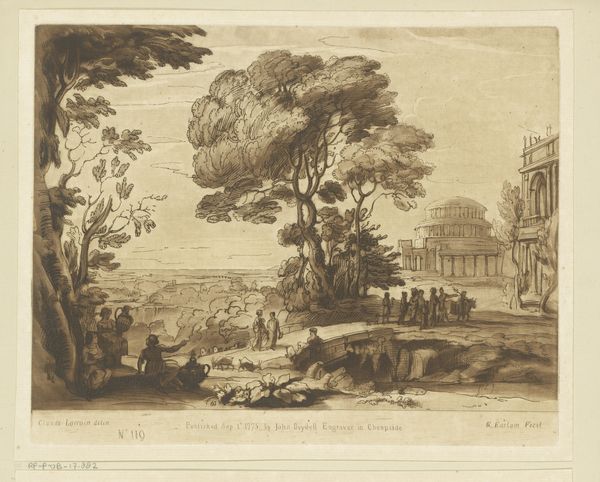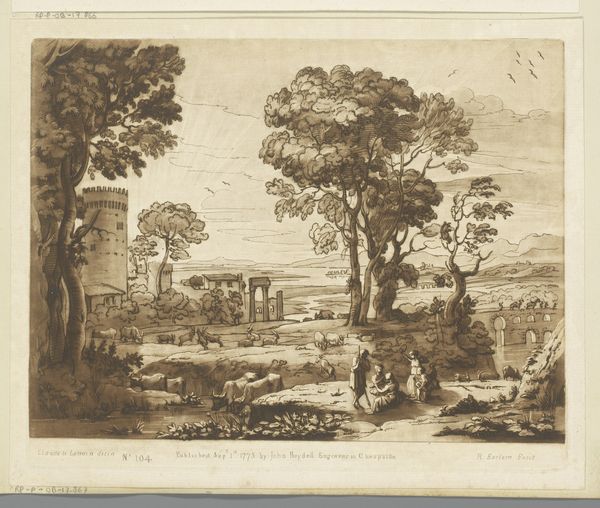
print, watercolor
#
baroque
# print
#
landscape
#
watercolor
#
orientalism
#
watercolor
Dimensions: height 283 mm, width 395 mm
Copyright: Rijks Museum: Open Domain
Editor: This is "View of the Great Lake of Hanoi," a watercolor print created sometime between 1745 and 1775, currently held at the Rijksmuseum, and attributed to Jean-François Daumont. The landscape seems incredibly idyllic, almost impossibly picturesque, don’t you think? What do you see in this piece? Curator: This print provides us with a fascinating glimpse into the dynamics of European engagement with Asia in the 18th century. While presented as a literal depiction of Hanoi’s Great Lake, it is heavily filtered through a European artistic lens, wouldn't you agree? Editor: Absolutely. It looks like someone imagined the lake. What exactly are you saying, filtered through? Curator: Well, how does this image, for example, conform to or diverge from other landscapes of the time, particularly within the context of Orientalism? Consider the details. The almost theatrical composition, the precise rendering of the boats and buildings, do they reflect an accurate representation of Vietnamese life or something else? Editor: Hmm, now that you mention it, the architectural details seem…exaggerated, perhaps? Almost like a stage set rather than actual buildings. It's also titled "Le Grand Lac de Barbarie." The Barbery lake in Northern Africa. Seems oddly misrepresentative of Hanoi's geography and social and political conditions of the time. Curator: Precisely! And it gets even more problematic, think about who would have been able to even have these artworks in their home, influencing the socio-economic gaze on different cultures around the world. So, by examining its visual language and historical context, we can uncover the complex interplay of power, knowledge, and representation in shaping European perceptions of the East. Editor: I hadn't considered the power dynamics at play here. Curator: It's a stark reminder of how images, even seemingly benign landscapes, can participate in broader narratives of cultural domination. Editor: This print gives us much more to think about than initially apparent, thank you.
Comments
No comments
Be the first to comment and join the conversation on the ultimate creative platform.
